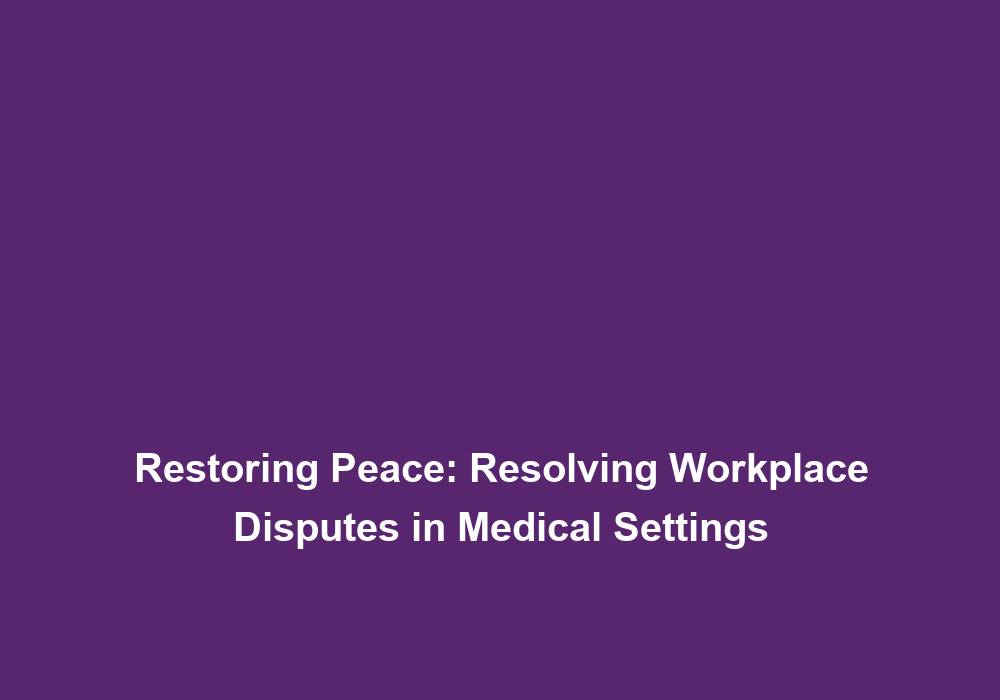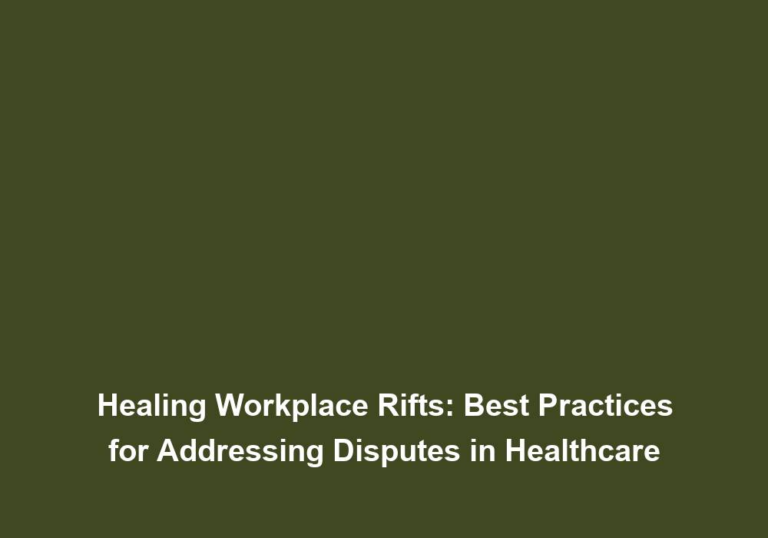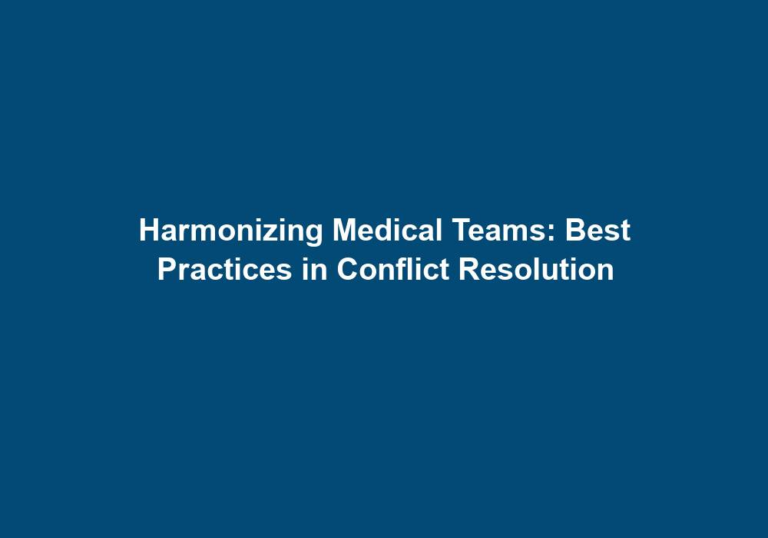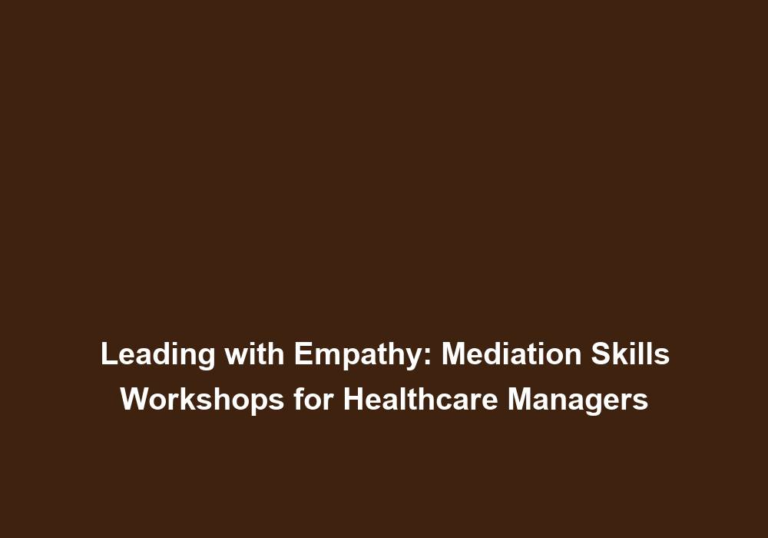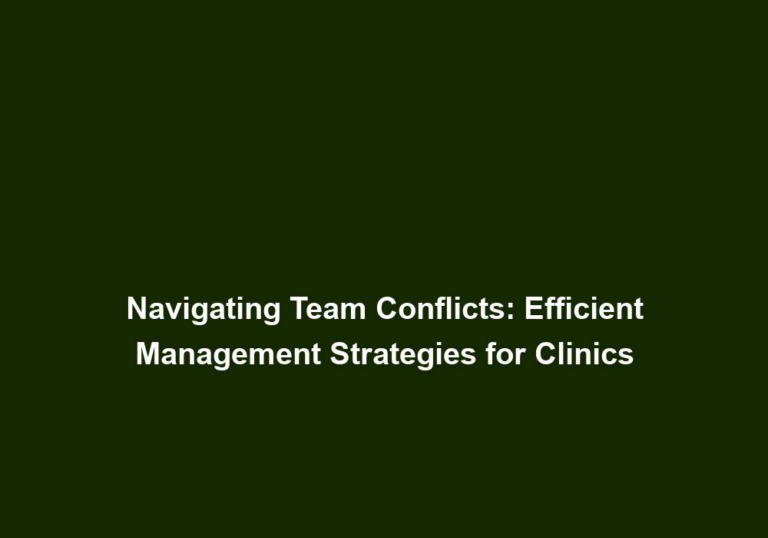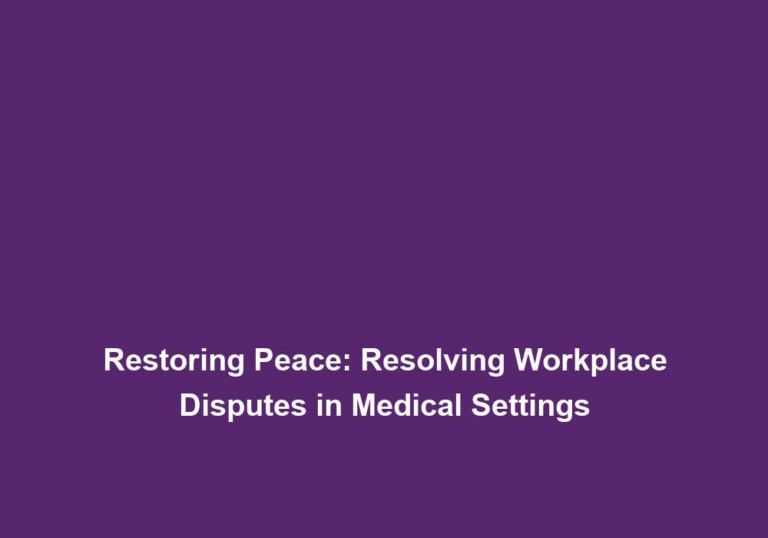Restoring Peace: Resolving Workplace Disputes in Medical Settings
Workplace disputes can be a major source of stress and tension in any industry, and medical settings are no exception. The demanding nature of healthcare work, combined with high-pressure situations and differing personalities, can often lead to conflicts among healthcare professionals. However, it is essential to address and resolve these disputes effectively to maintain a harmonious work environment and ensure the delivery of quality patient care. In this article, we will explore strategies and best practices for restoring peace and resolving workplace disputes in medical settings.
Understanding the Causes of Workplace Disputes in Medical Settings
Before delving into resolution techniques, it is crucial to identify the underlying causes of workplace disputes in medical settings. Some common factors that contribute to conflicts among healthcare professionals include:
-
Communication breakdown: Miscommunication or lack of effective communication channels can lead to misunderstandings, resentment, and disputes. In fast-paced medical environments, clear and concise communication is vital to ensure that crucial information is conveyed accurately and efficiently. Implementing regular team meetings, utilizing communication tools, and encouraging open dialogue can help mitigate communication breakdowns.
-
Hierarchy and power dynamics: Healthcare organizations often have hierarchical structures, with various levels of authority. Power imbalances and conflicts arising from perceived or actual misuse of power can significantly impact team dynamics and create disputes. To address this, promoting a culture of respectful communication and fostering transparency in decision-making processes can help alleviate power imbalances and reduce conflicts.
-
Differences in work styles and values: Healthcare professionals come from diverse backgrounds and have unique approaches to patient care. When these differences clash, it can result in conflicts that require resolution to maintain a cohesive work environment. Encouraging team members to appreciate and value different perspectives can foster a culture of understanding and acceptance, reducing the likelihood of disputes.
-
Lack of shared goals and objectives: In medical settings, teamwork and collaboration are essential for providing optimal patient care. However, when individual goals are prioritized over shared goals, it can lead to disputes and hinder collaboration. Establishing clear, shared goals and objectives, and promoting a collaborative mindset among healthcare professionals can enhance teamwork and minimize conflicts.
Strategies for Resolving Workplace Disputes
Resolving workplace disputes requires a proactive and collaborative approach. Here are some effective strategies that can help restore peace and harmony in medical settings:
1. Promote Open and Effective Communication
Encouraging open, honest, and respectful communication is essential to prevent and address workplace disputes. Medical organizations should foster an environment where healthcare professionals feel comfortable expressing concerns, providing feedback, and seeking clarification. Promoting active listening skills and providing communication training programs can also facilitate better understanding and reduce conflicts. Additionally, implementing regular feedback sessions, utilizing digital communication platforms, and establishing clear channels of communication can help prevent misunderstandings and promote effective communication among team members.
2. Establish a Fair and Transparent Conflict Resolution Process
Having a well-defined conflict resolution process in place provides a structured approach for addressing workplace disputes. This process should be fair, transparent, and accessible to all employees. It is crucial to ensure that confidentiality is maintained throughout the resolution process to encourage individuals to come forward and discuss their concerns without fear of retaliation. Additionally, providing training on the conflict resolution process and making resources readily available can empower employees to address and resolve conflicts in a constructive manner.
3. Mediation and Facilitation
Mediation and facilitation can be highly effective methods for resolving disputes in medical settings. A neutral third-party mediator or facilitator can help guide discussions and assist in finding mutually acceptable solutions. This approach promotes active participation, understanding, and collaborative problem-solving among the involved parties. During the mediation process, the mediator can help clarify misunderstandings, facilitate open dialogue, and explore potential resolutions. Mediation can also be an opportunity for healthcare professionals to build trust and strengthen relationships, contributing to a more harmonious work environment.
4. Encourage Collaborative Problem-Solving
Rather than resorting to adversarial approaches, healthcare organizations should encourage collaborative problem-solving techniques. This involves bringing together individuals involved in the dispute to collectively identify the underlying issues, brainstorm potential solutions, and work towards a consensus. Collaboration fosters trust, encourages creative thinking, and leads to sustainable resolutions. Implementing team-building exercises and fostering a culture that values collaboration and cooperation can further enhance the effectiveness of collaborative problem-solving.
5. Implement Conflict Resolution Training Programs
Providing conflict resolution training programs for healthcare professionals can significantly contribute to preventing and managing workplace disputes. These programs can equip individuals with essential skills such as effective communication, negotiation, and conflict resolution techniques. Investing in ongoing training opportunities demonstrates an organization’s commitment to maintaining a positive work environment and encourages personal and professional growth. By enhancing healthcare professionals’ conflict resolution skills, organizations can empower employees to address and resolve disputes constructively, leading to a more harmonious workplace.
6. Foster a Culture of Respect and Inclusion
Cultivating a culture of respect, inclusion, and appreciation is vital for reducing workplace disputes. Healthcare organizations should prioritize diversity and promote equal opportunities for all employees. By valuing and embracing diverse perspectives, organizations can minimize conflicts arising from misunderstandings, biases, or discrimination. Implementing diversity and inclusion initiatives, providing sensitivity training, and fostering an inclusive environment can contribute to a respectful and harmonious workplace.
7. Regularly Evaluate and Address Organizational Policies
Revisiting and evaluating organizational policies and procedures is crucial to identify any gaps or areas of improvement that may contribute to workplace disputes. This includes policies related to communication, conflict resolution, performance management, and employee well-being. Regularly reviewing and updating these policies ensures that they remain relevant and aligned with the evolving needs and challenges of the healthcare industry. Soliciting feedback from employees, conducting surveys, and involving key stakeholders in policy development can help identify potential issues and ensure that policies are effective in preventing and resolving conflicts.
In conclusion, workplace disputes in medical settings can have a significant impact on both the well-being of healthcare professionals and the delivery of quality patient care. By understanding the causes of these disputes and implementing effective resolution strategies, healthcare organizations can restore peace, foster a harmonious work environment, and ultimately enhance patient outcomes. Open communication, fair conflict resolution processes, mediation, collaborative problem-solving, training programs, and a culture of respect all play crucial roles in resolving workplace disputes and maintaining a positive and productive medical setting.

